WOOD FLOORS 101
Wood Floors 101 is a guide to valuable information about wood flooring. When purchasing hardwood floors, make sure to be educated on your investment, including how the wood reacts to light, environment and how fuming and other treatments enhance the visual beauty of the floor. Here you can learn all about Hallmark Floors’ process is creating wood flooring products, from construction to finish.
General facts about wood and wood flooring
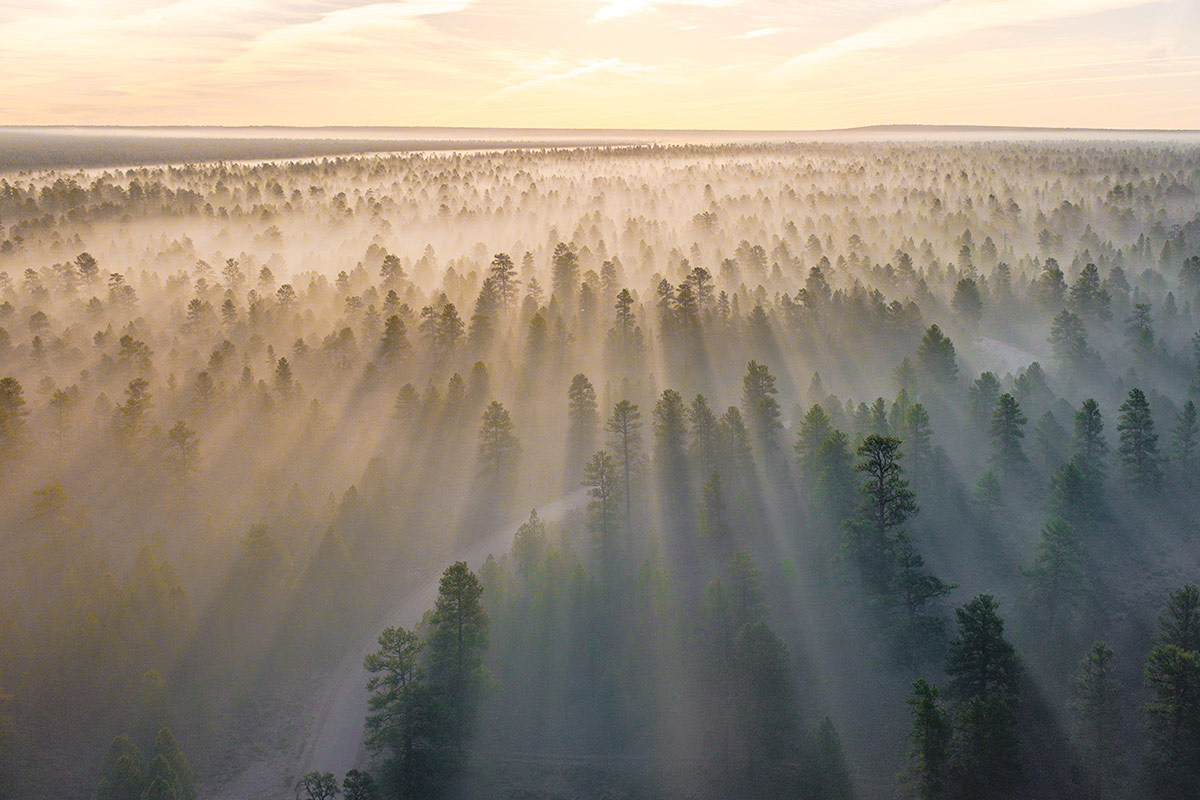
Reaction to Environmental Conditions
Wood is a product of nature. As a natural material, it will expand and contract as it gains and loses moisture. Some gaps between the boards during low-humidity seasons are normal and not considered a defect. Maintaining optimum humidity levels of 30 to 55% (35 – 55% for hickory) will minimize these occurrences. Allowing relative humidity levels to fall below 30% can result in structural damage to the floor such as large gaps, splits in the surface, distortion of the boards and structural failure. Humidity levels above 55% can result in surface warping and structural failure of the boards.

Light Exposure
Varying changes (patina) can occur when wood is exposed to UV rays from sunlight, florescent, LED, and incandescent bulbs. Window coverings, UV resistant tint, solar screens can minimize but not eliminate this natural occurrence. Certain species are more susceptible to light & development of varying degrees/shades of patina, due to their high content of natural oils.
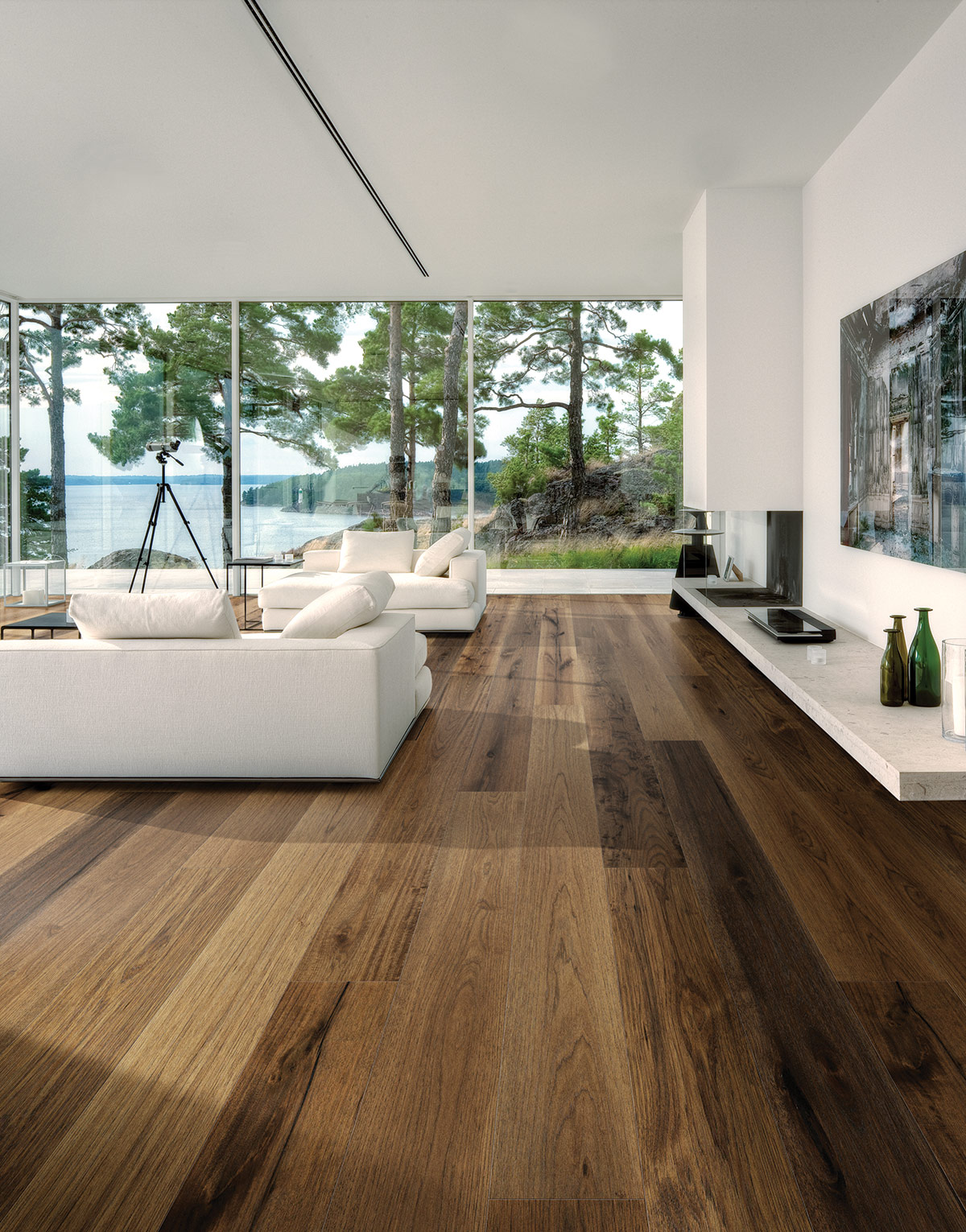
Board Variation & Color Change
Wood is a natural product and will vary in color and grain appearance from board to board. This is a natural aspect of the wood. Texture, including graining, knots, natural imperfections and character will vary significantly from board to board. Exposure to UV rays from sunlight, florescent, LED and incandescent bulbs can change (patina) each board. Window coverings, UV resistant tint, solar screens can minimize but not eliminate this natural occurrence. Certain species and collections are more susceptible to light and development of varying degrees/shades of patina, due to their high content of natural oils & tannins.
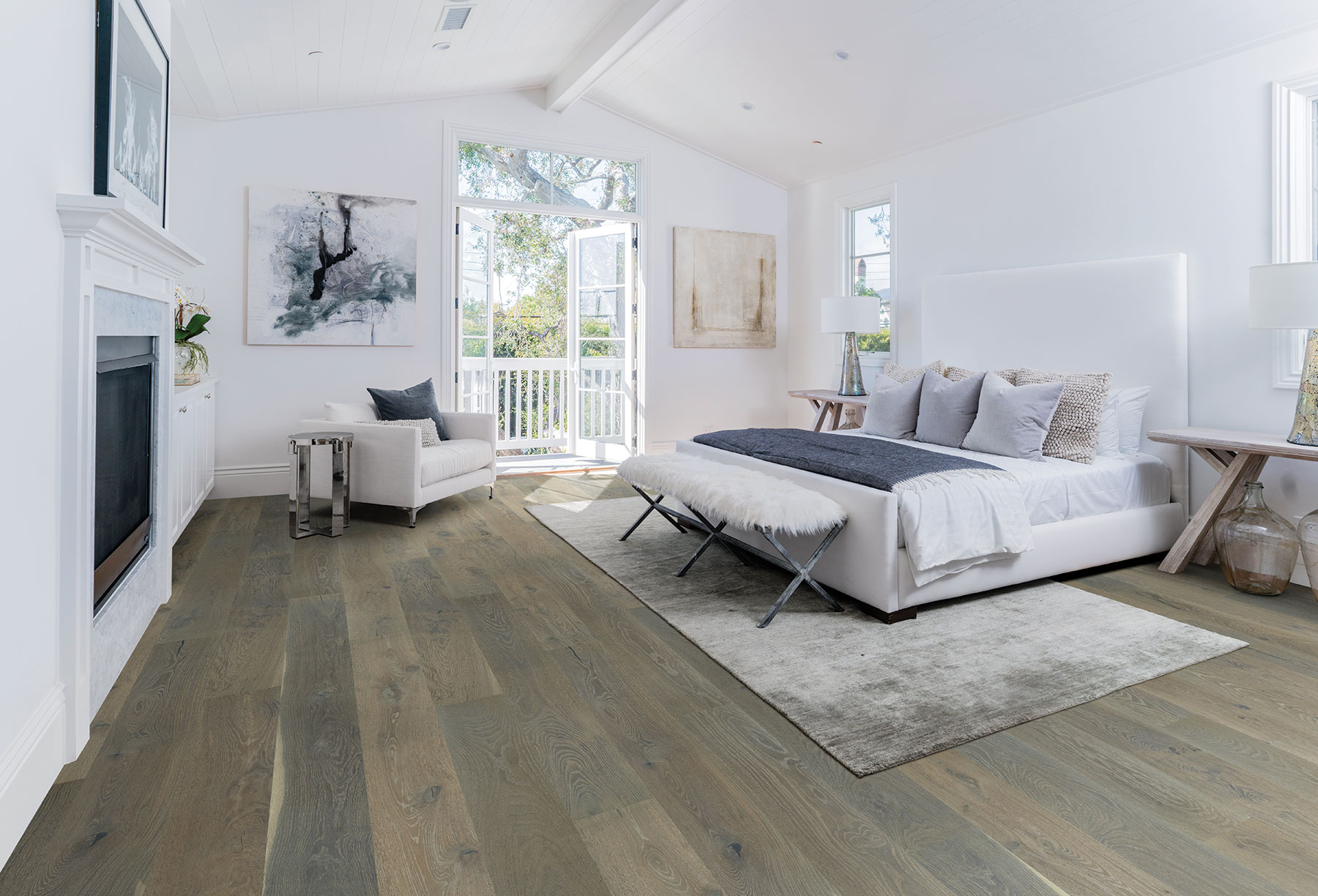
Graining & Natural Changes
Hallmark wood floors are created to showcase the natural beauty of wood. As such, the planks will contain natural, wide range of visuals. Character expectations in real hardwood flooring highlight the wood’s authentic beauty through natural features like knots, mineral streaks, and varied grain patterns. Color variations, influenced by the tree’s age and environment, result in differences in shade and hue. Small splits or fissures, known as checks and cracks, occur naturally as the wood ages. The contrast between darker heartwood and lighter sapwood adds depth, while natural imperfections like wormholes and burls celebrate the wood’s origins. These characteristics add warmth, uniqueness, and authenticity, ensuring each hardwood floor installation is one-of-a-kind.
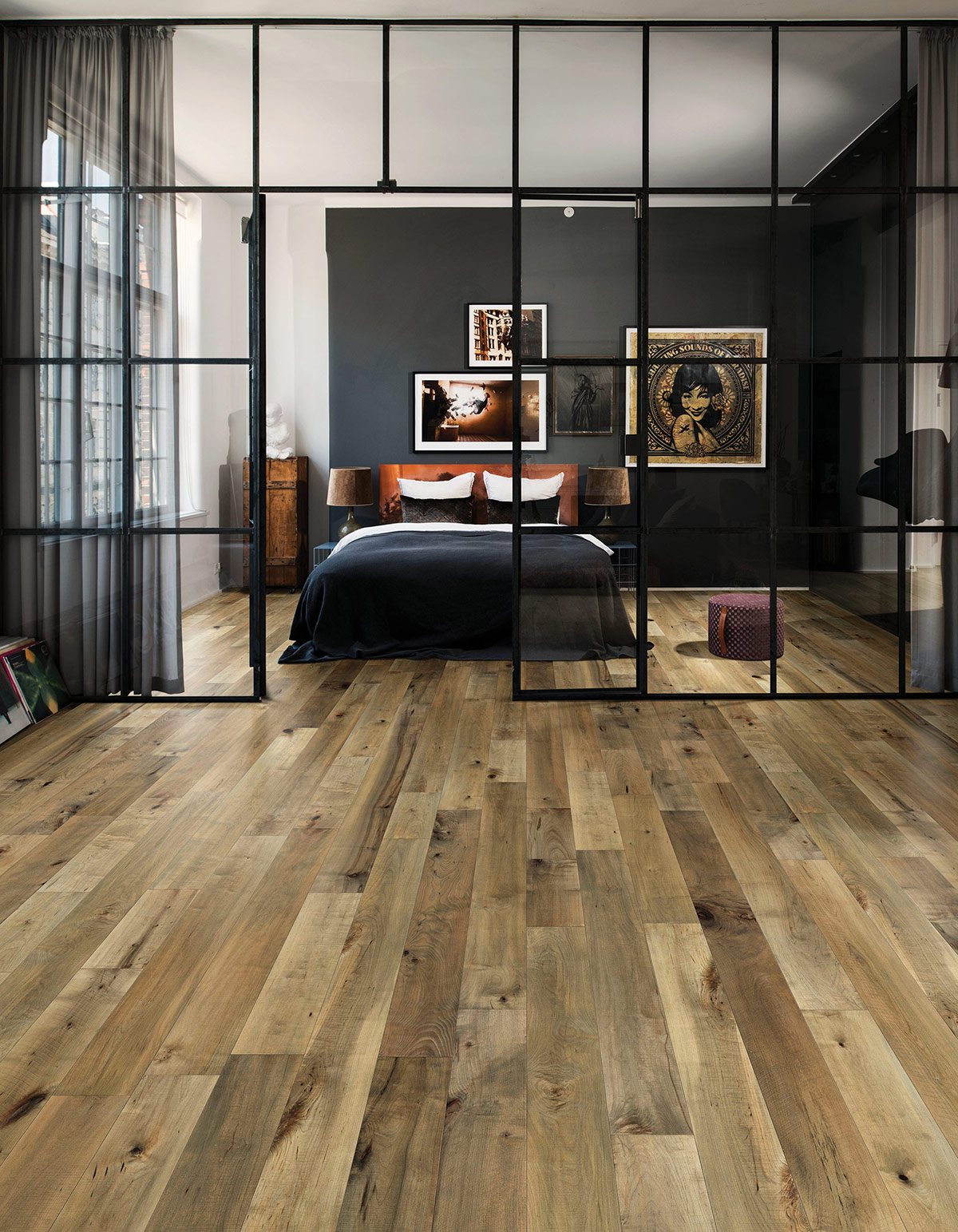
Heartwood, Sapwood & Fuming
The difference between the inner part of the tree (heartwood) and the outer part of the tree (sapwood) can be seen as variations of light and dark. The natural contrast between heartwood and sapwood plays a major role in the color of wood floors. Variations can occur from board to board, as well as in the same board. This occurs naturally, and is not an “unfinished” board.
Staining wood floors can diminish the appearance of heartwood and sapwood, but it doesn’t entirely hide these natural characteristics. The stain helps to blend the natural contrasts together. It doesn’t eliminate it. Fuming has the opposite affect on heartwood and sapwood. Fumed floors are designed on purpose to magnify the natural contrast. To view a range in fumed colors, click here.
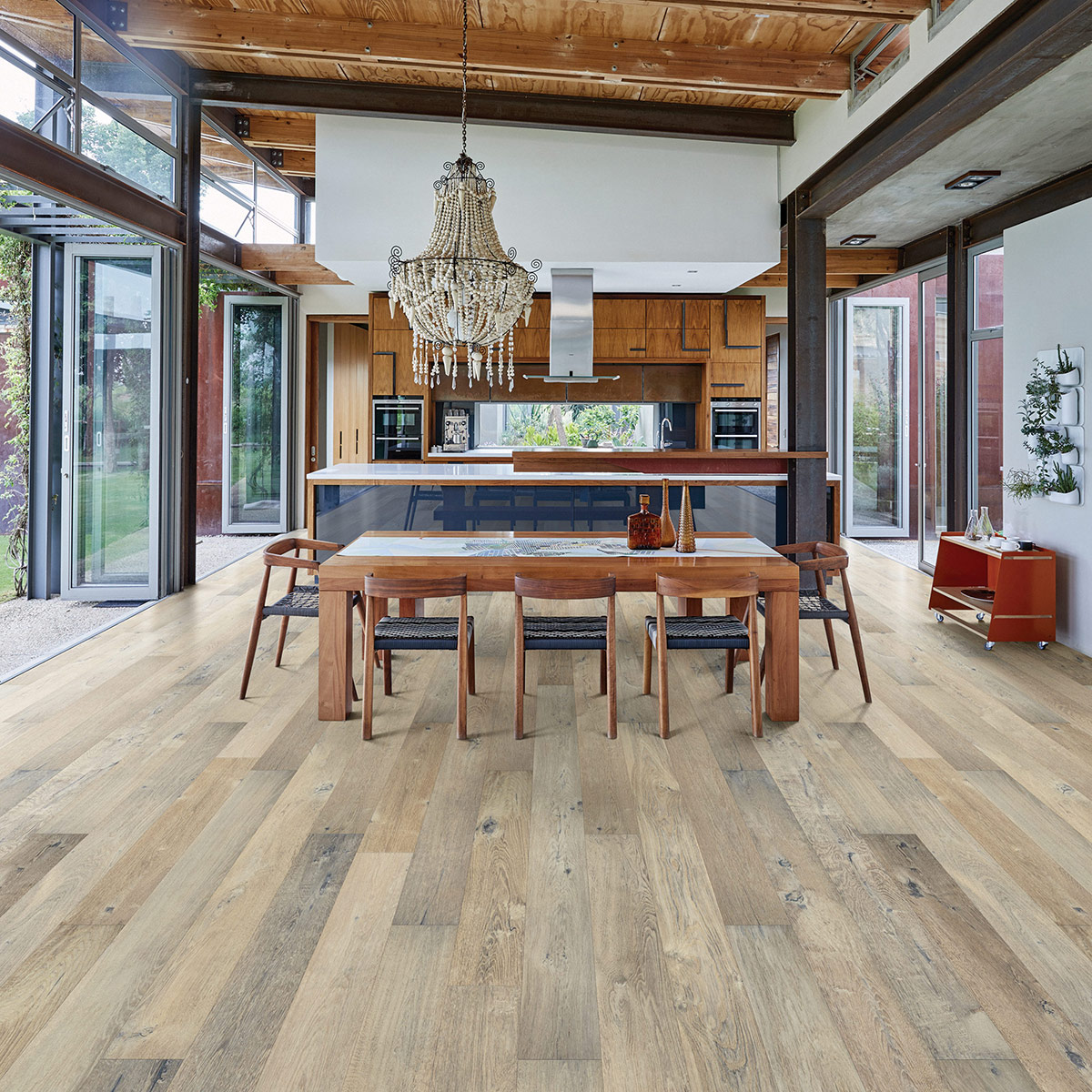
Natural Color Variation
Natural color variation in hardwood flooring is a hallmark of its authenticity and beauty. Each plank of hardwood is unique, reflecting the tree’s age, species, and growing conditions. These variations can include differences in shade, grain patterns, and knots, creating a dynamic and unique look. Embracing these natural inconsistencies not only adds character and depth to your floor but also highlights the genuine nature of the material, ensuring that no two hardwood floors are exactly alike.
Click here to view wood color variations that can be expected in every color in our Hardwood lines.
Click here to view color variations that can be expected in every color in our Serenity line.
Note: Samples featured online and in store may not be fully representative of your entire installed floor.
QUALITY IN EVERY GRAIN
Our collections are small batch, hand-touched & not mass produced, and are always designed with fashion in mind. The subtle nuances that make Hallmark Floors unique are all done by hand and inspired by the natural graining of the wood. The 100% hand scraping that imitates turn-of-the- century flooring and the multi-step weathering techniques beautifully highlights the inherent characteristics found in nature. By layering all of the processes together, it enhances the style and cut of the plank.
Engineered Hardwood Construction

TrueCore® Construction
Hallmark Floors uses only true hardwood veneers and TSCA Title VI glues for the center-ply in our engineered floors’ hardwood construction. The center veneers are cold pressed, then hot pressed using tremendous pressure. This process makes the eco-friendly center core harder and more proportionally stable.
• Higher Stability
• Higher Density
• Higher Strength
• Higher Indoor Air Quality
Truecore® is third party verified and surpasses the TSCA Title VI emission requirements.
TrueCore® 2 Construction – True Collection Only
Made from quarter sawn pine lamellas attached to the surface wear layer. Providing 2 key performance enhancing features:
1. Quarter sawn pine lamellas create 25% more dimensional stability with the same indentation resistance as hardwood for optimal structural strength.
2. A 1:5 core to wear surface ratio with an additional applied sealant to the underneath of the plank creating the highest optimum dimensional stability in our plank.
Rapidly renewable core comprises 80% of the volume of the plank, for best management of forest resources. 90 degree side rail design, for precision tongue & groove, providing smooth, clean, simple installation.

Same as Solid
Hallmark Floors’ engineered hardwood floors is constructed with an ultra thick wear layer has the same usable surface as 3/4” solid hardwood flooring.
Sawn-Cut Engineered Floors
Superior Wear Layer
Hallmark Floors’ hybrid sawn cut engineered wood floors feature the same wear layer as solid.

Sawn-Cut Style
Experts in the industry agree that sawn-cut provides the best quality, stability & visuals for solid & engineered floors. Sawn-cut engineered floors allow for the thickest veneer (4mm) with the highest degree of stability. Engineered sawn-cut wear layers are the ONLY engineered floors that are equal to solid wood floors.
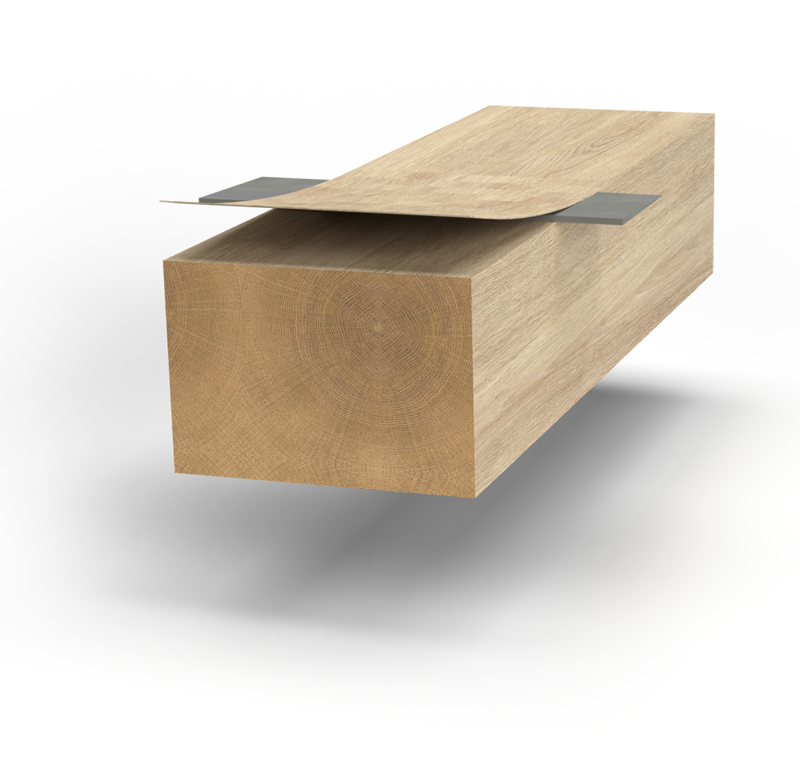
Slice-Cut Style
Slice-cut features the same beautiful look as sawn cut veneers and is the second most common way to create a wood veneer, it’s just in thinner layers (2mm or less). This creates stunning visuals while still providing stability for engineered wood floors.
Wood Finish | Finish Technology
Hallmark Floors offers world-class floor finishes and finish equipment aimed at making our floors as durable as they are beautiful. All Hallmark Floors Hardwood finishes are EPA TSCA Title VI compliant. We have, in fact, been proactive in making this great product safe for its users. View our certification here.
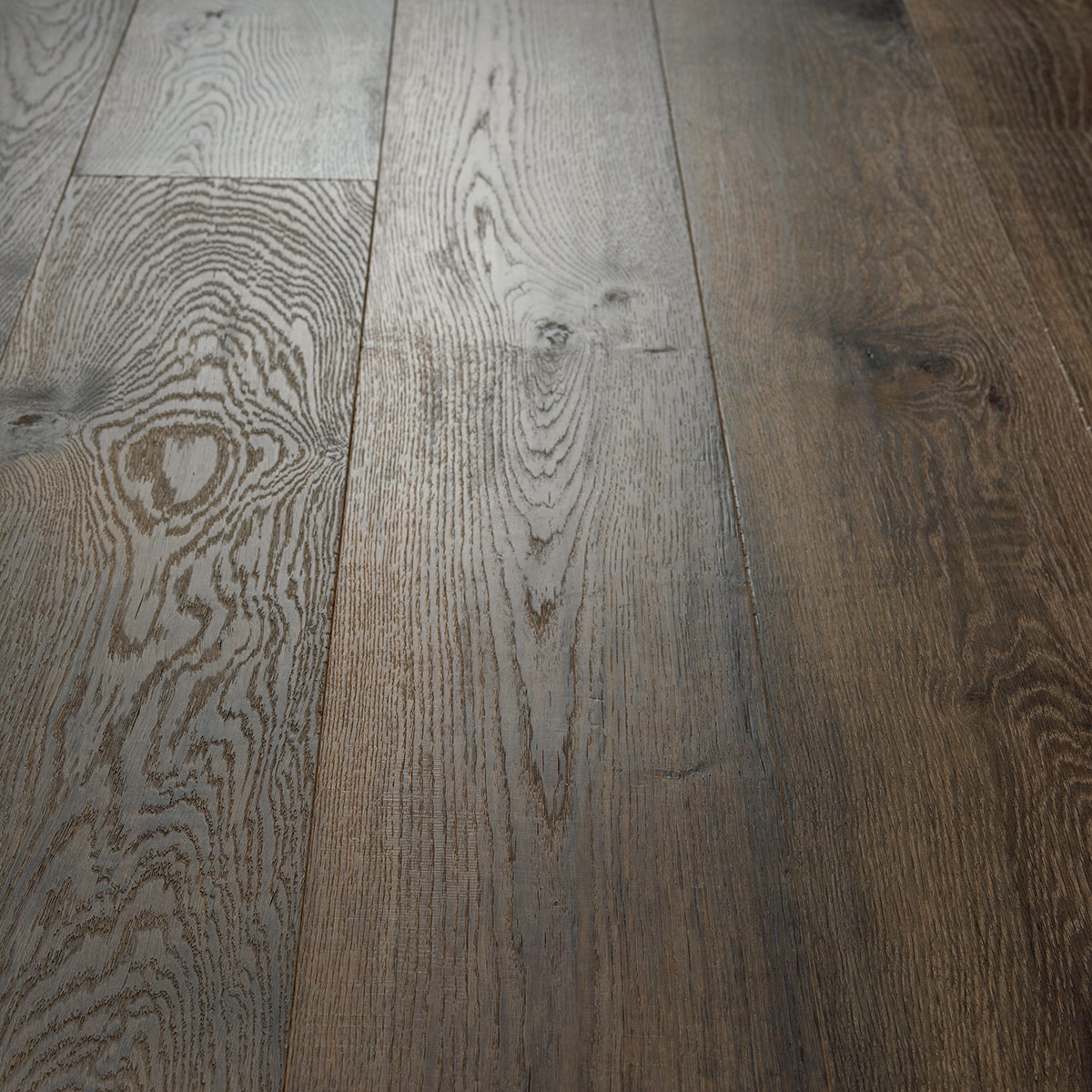
Nu Oil® Hybrid Multi-layer Oil Finish
Nu Oil® incorporates new hybrid technology, creating a highly durable, stain and fade resistant finish. Nu Oil® is easier to maintain than traditional oils and does not require immediate re-coating when the floor is installed. They come with an extensive warranty.
Collections from Hallmark Floors are finished with Nu Oil® Finish:
- True
- Organic 567
- Alta Vista
- Ventura (Oak only)
- Novella (Oak only)
- Organic Solid
- Crestline Solid
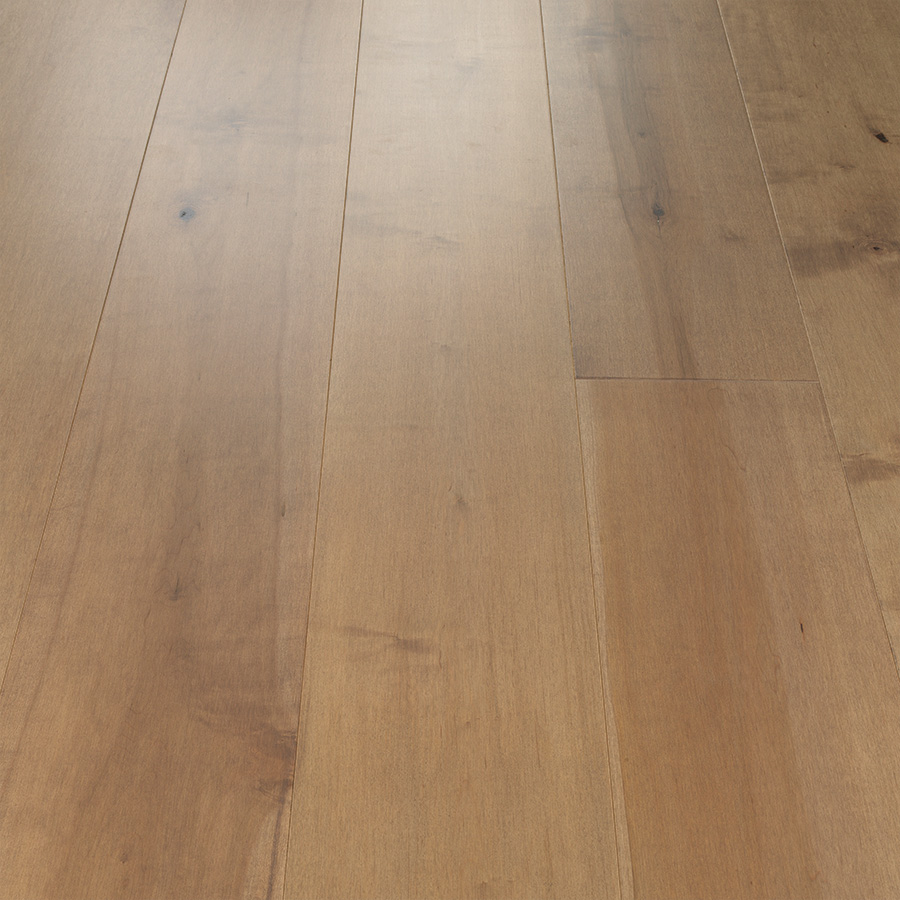
TRUEMARK® GLAZE TEK FINISH
In the TrueMark® Glaze Tek Poly Finish, years of research and development have resulted in the first true high fashion, glazed furniture-finish applied to a hardwood floor. To achieve unique depth and richness, we use four coats of hand applied glazing techniques will exhibit natural movement in the staining process, and 8 more coats of ultra clear finish, for a total of 12 coats of finish. Nano technology is incorporated into the surface and fortified with aluminum oxide. The result is a finish that is so durable that it carries an extensive warranty against wearing through.
Collections from Hallmark Floors are finished with TrueMark® Glaze Tek Poly Finish:
- Avenue
- Serenity
- American Traditional Classics
- Ventura (Maple, Hickory & Walnut)
- Monterey
- Novella (Maple & Hickory only)
- Regatta
- Grain & Saw
Wood Finish | Surface Design
Hallmark Floors offers world-class floor finishes and finish equipment aimed at making our floors as durable as they are beautiful. All
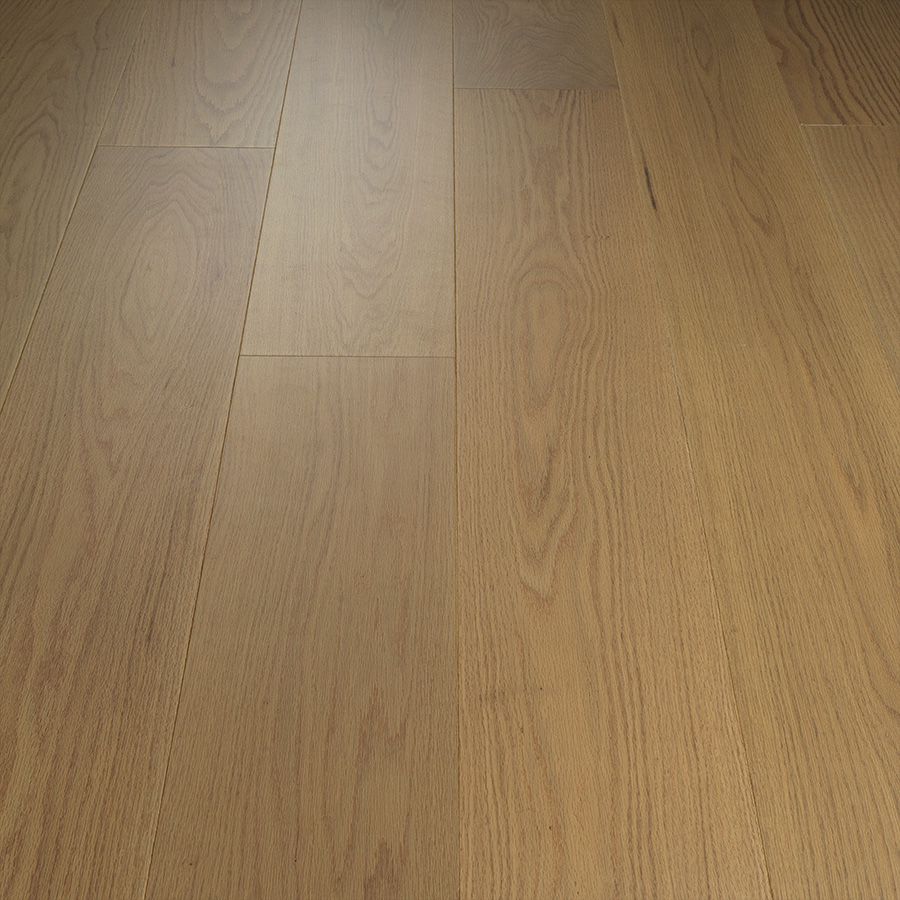
Smooth
Smooth wood floor texture is a type of hardwood flooring that has been sanded down to create a perfectly smooth surface. There are no bevels, brushings, or added textures of any kind on the texture. This type of floor is popular among people who prefer a uniform appearance.

Replicated Real Driftwood
Replicated real driftwood floor texture is a popular choice for homeowners who want the natural beauty of driftwood without the hassle of finding and installing real driftwood. It is easy to maintain and clean, and it can enhance the beach or coastal décor.
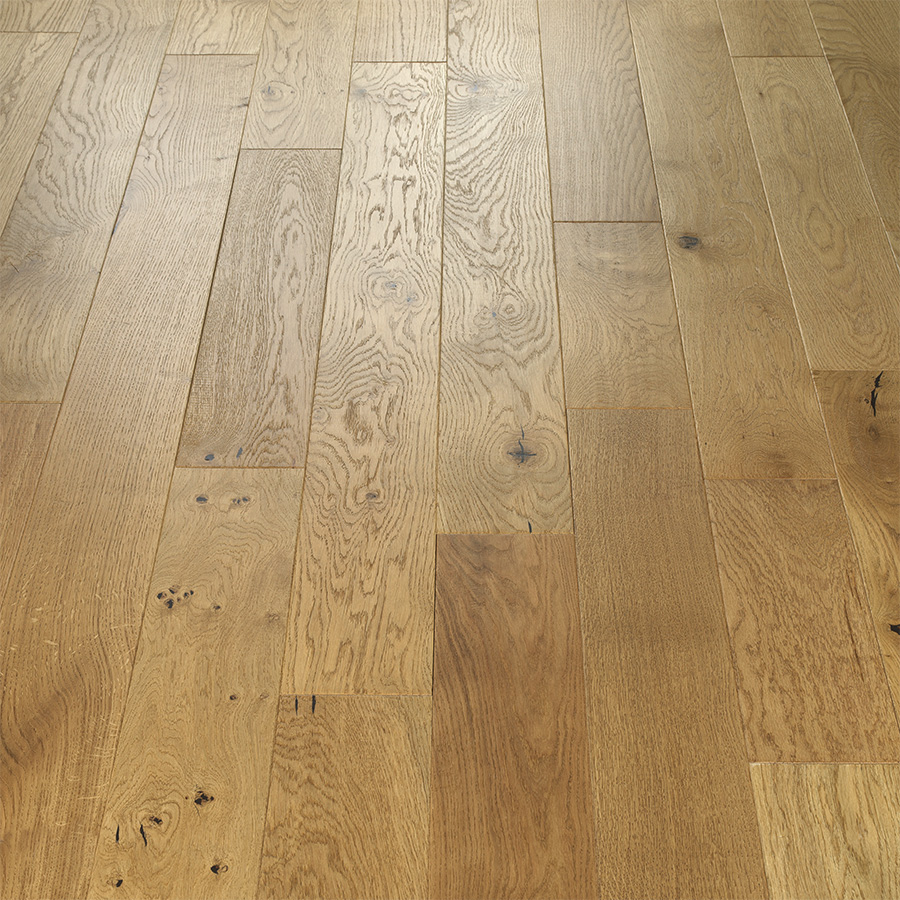
Hand Sculpted
Hand sculpted hardwood floor texture can be a great way to add character and personality to your home. Each plank is hand touched by our artisans, and it can be a more durable option than smooth hardwood floors, as the texture helps to hide scratches and dents.
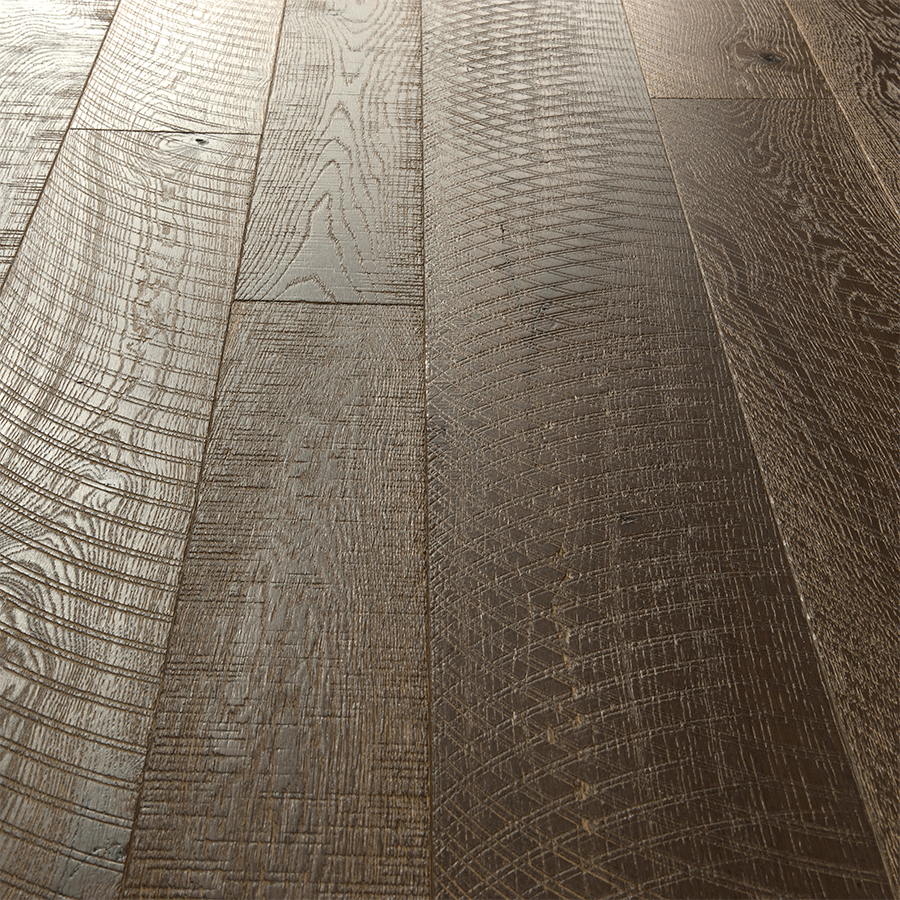
Sawn Texture
This tvpe of sawn cut texture is created by using a circular saw to cut the wood. The saw marks are typically arc-shaped and run perpendicular to the length of the board. This look has a more rustic aesthetic that promotes that barn wood look.

Wire Brushed
Wire brushed texture is created by using a wire brush to remove the soft fibers from the surface of the wood. This exposes the harder, more durable grains, creating a textured surface. Overall, wire brushed wood flooring is a versatile and stvlish option that can add character and durability to any home.
FACTS ABOUT WOOD
It’s a renewable material
Wood is one of the most naturally renewable energy sources, which means it will have less of an impact on the environment compared to other materials.
It lasts a long time
When treated correctly, hardwood floors, for instance, can last longer than a lifetime – some over 100 years. The longer wood lasts, the less energy is used on the production of new products, which in turn makes it better for the environment.’
It can be recycled and reused
With wood lasting a lifetime, it’s the ideal material for recycling.
It absorbs carbon dioxide
Trees absorb carbon dioxide from the atmosphere, which lowers the overall carbon footprint of wood. As a ‘carbon store’, once wood absorbs CO2, it is stored there and remains out of the atmosphere.
It’s great at retaining heat
‘The cellular makeup of wood means that it naturally retains heat more effectively than other materials – in fact, it holds seven times more heat than ceramic tiles
Its waste is 100 per cent biodegradable
There is very little waste when wooden products are made, whether it’s floorboards, doors or windows, and any residual chippings can be burned as an energy source or used as sawdust during manufacture. The Forestry Commissionsays: ‘There is no waste in timber production.
Wood Species
Hallmark Floors offers world-class floor finishes and finish equipment aimed at making our floors as durable as they are beautiful. All
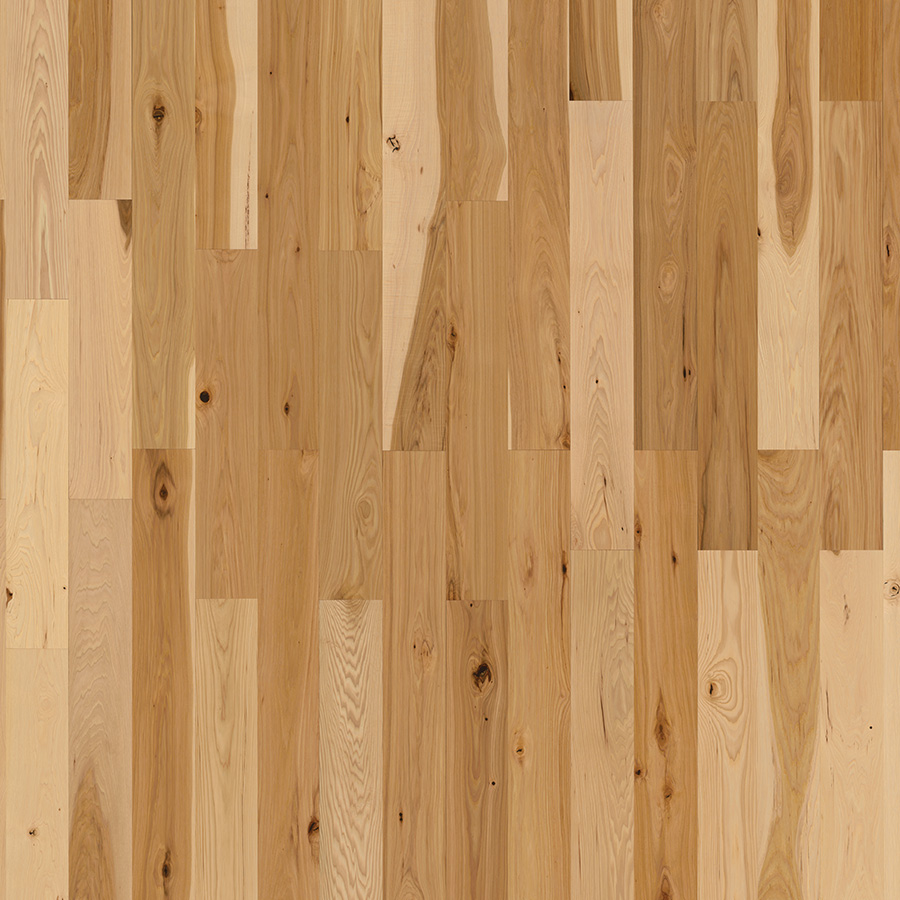
Hickory
The durability of hickory is nearly unmatched among hardwood species. It is resilient, hard to scratch, easy to maintain, offers unique colors, and is less expensive than exotic woods. No wonder, it is one of the most popular choices for wood flooring. The heartwood is brown or red with the sapwood being creamy white. Hickory is one of the most common wood species in the United States. In fact, there 12 species of hickory in the US and virtually all of them produce usable lumber. Some of them even produces edible tree nuts – like pecans.
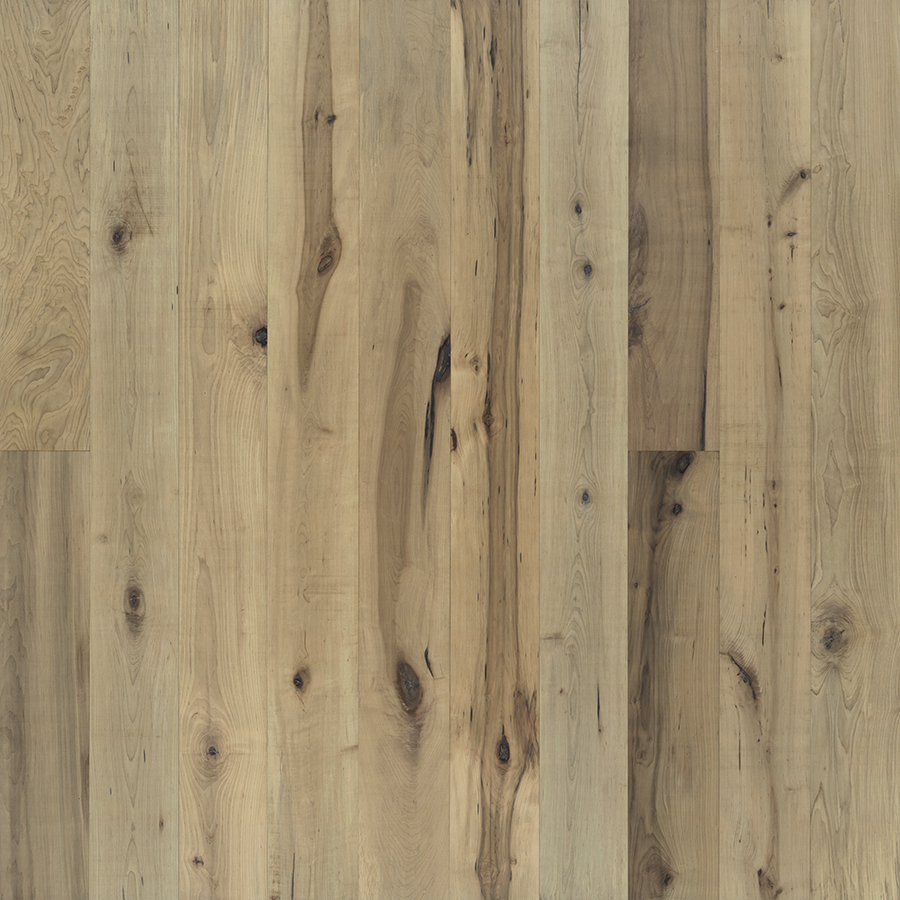
Maple
The sapwood color of maple ranges from nearly white, to an off-white cream color, sometimes with a reddish or golden hue. The heartwood tends to be a darker reddish brown. Today, the hard variety of the species is widely used for everything from home flooring and furniture to millwork such as stairs, handrails, moldings, and doors. As a cold weather tree that favors a more northerly climate, hard maple grows best in the upper Midwest and New England (two-thirds of the lumber originates there). You will find the greatest stands of hard maple around the Great Lakes, in the St. Lawrence Valley, and northern New England, where trees can attain a height of 130′.
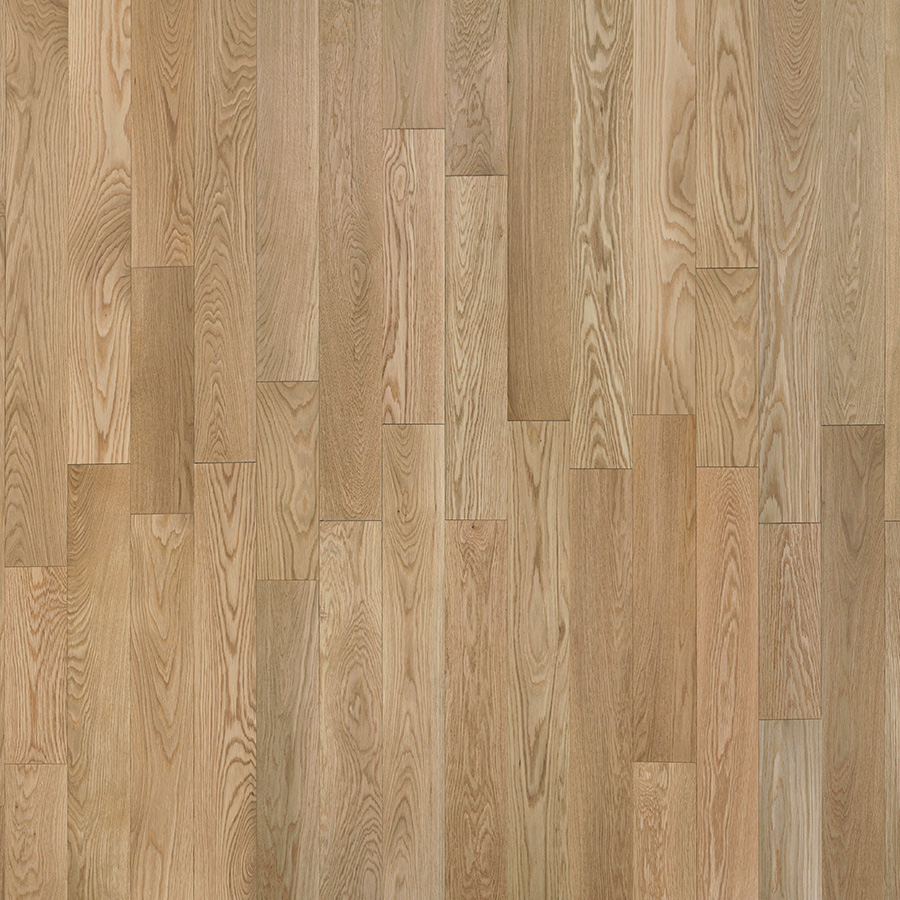
Oak
With high strength, good looks and wide availability, oak has become a woodworking favorite. Oak has a long, straight grain with a silvery structure. The color varies from light to dark brown and over time the wood can develop an amber-like tone. An oak floor is beautiful, durable and have lots of character. Several surface treatments and coloring methods provide almost endless customization possibilities. The wood keeps its natural beauty and characteristic pattern, even after treatment. Since oak is such a versatile wood species, it is widely used in the wood flooring industry. There are actually more than 400 species of oak, with about 60 of them native to North America.
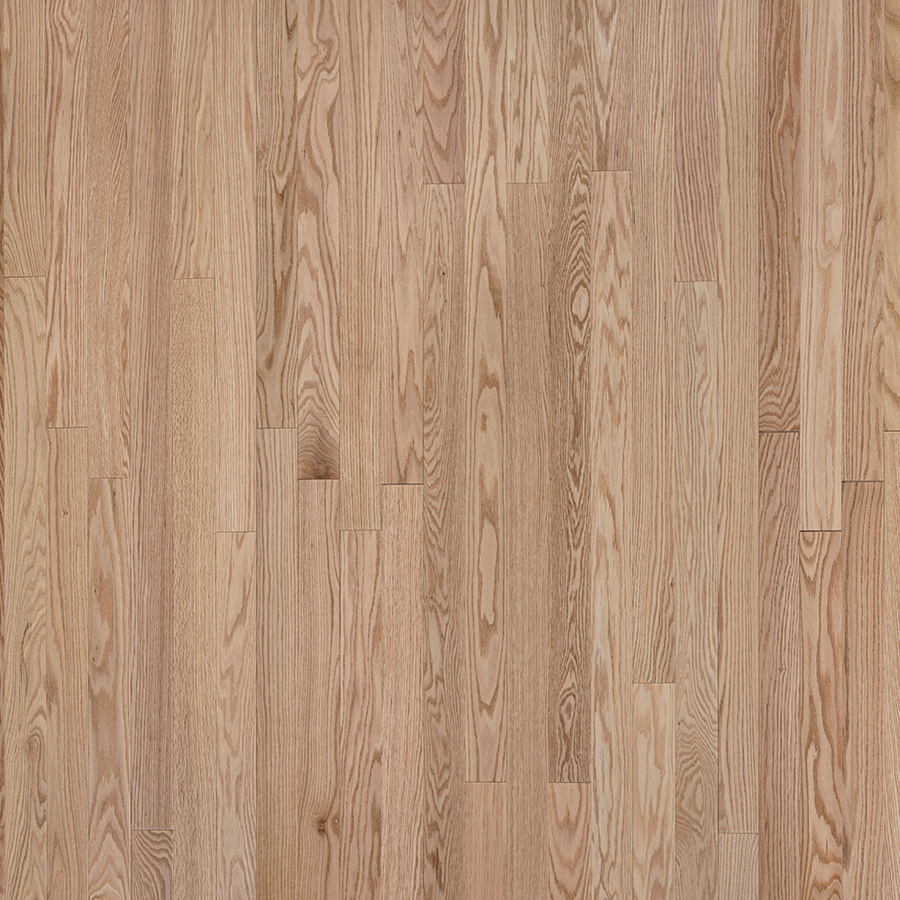
Red Oak
As America’s favorite hardwood, red oak represents around a third of all commercially available hardwood in the United States. Red oak is a straight grained wood species with a coarse texture that varies according to rate of growth. Color ranges from light cream or pinkish-red to dark tan or golden brown. It is hard and durable, and it takes a wide range of colored stains quite easily. Red Oak undergoes a medium degree of color change over time, with a slight ambering of the color you get when freshly milled. Practically any wooden item you can imagine has—at one time or another—been fashioned from red oak. It mainly grows from Oklahoma eastward, northward into southern Canada, and as far south as Florida. All in all, you’ll find red oak abundant—of the estimated 80 billion standing board feet of oak in the US, over half of it is red.

Walnut
Walnut is a hard, solid wood with a distinct and bold grain. Heartwood can range from a lighter pale brown to a dark chocolate brown with darker brown streaks. Color can have a grey, purple, or reddish cast. The wood gains a special luster over the years and undergoes a medium to high degree of color change with the dark brown heartwood lightening over time to a more golden brown. Its intense color and solid properties have made it a favorite for wood flooring and carpentry. Growing widely in Canada and the US, early generations of American furniture makers were discovering the splendor of this dark domestic wood, the tree’s nuts were harvested for food and logs used for timber–framed homes.

